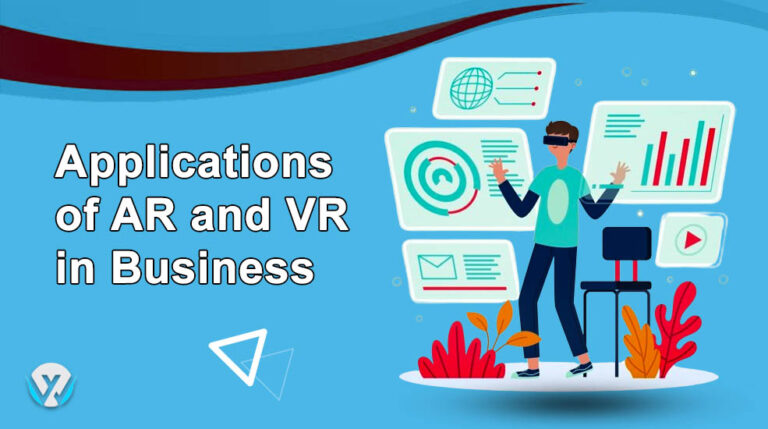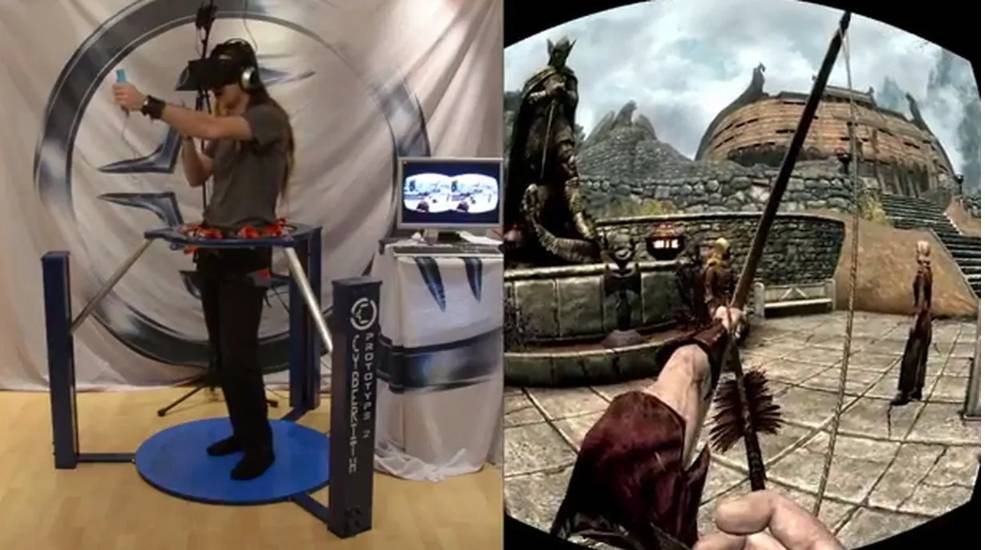Augmented Reality (AR) integrates the digital world and the real world. Virtual Reality (VR) is based on 3D displays of digital words. AR and VR technologies have revolutionized the world as a whole. AR and VR technologies have changed every aspect of life, including interaction, fashion, healthcare, Tourism, real estate, gaming retail, e-commerce, education, navigation, entertainment, research, and defense. The use of AR and VR technologies is increasing in businesses. Integrating AR and VR technologies has changed the way of working, developing, and creating virtual models.
AR & VR Applications in Businesses:
Augmented Reality and Virtual Reality help in completing tasks efficiently and quickly. The application of AR and VR in businesses is stated below:
Retail and E-commerce:
AR technology is changing the way we shop. It allows you to try clothing and accessories virtually and choose wisely. 3D previews of clothes, accessories, furniture, and other home appliances enhance the customer shopping experience. Retail Stores use VR technology, enabling the customers to wear and experience the products digitally. It makes shopping more fun and helps in making quick decisions.
Use in Healthcare:
AR technology has also revolutionized the healthcare sector. Doctors and surgeons use AR during surgery to obtain real-time information on digital screens. AR Technology allows multitasking and increases surgeons’ efficiency. VR supports understanding the complicated surgeries and procedures in the virtual world. These technologies also enable the instructors to explain the human body and nervous system through 3D models.
Education:
AR and VR Technologies are revolutionizing the way we educate and learn. It allows you to learn and experiment in real-time digital space. AR and VR technologies make scientific experiments and learning more exciting and convenient for students and teachers. With the help of 3D models, students can easily understand complex models and enhance their learning experience.
Real Estate:
AR and VR have disrupted visiting, selecting, and buying real estate properties. Buyers don’t need to visit the properties physically. You can see properties virtually through AR and VR gadgets and experience the amenities in real time. AR and VR empower designers to design virtual models of properties as per customers’ desires. This technology allows buyers and sellers to make rational decisions based on real-time assessments and experiences.
Use in Travel and Tourism:
AR & VR are revolutionizing the travel and tourism industry. This technology lets tourists get all the information about places on their AR Gadgets. It also enables them to get information on hotels, restaurants, and other places on layers of digital display over real-time view. AR gadgets also offer navigation and translation facilities to users. Travelers and tourists may also virtually visit multiple hotels before booking in actuality. VR also allows users to see different cities and locations in a virtual world without going there.
Use in Manufacturing:
Virtual Reality and Augmented Reality are changing and improving the conventional ways of manufacturing. VR enables product developers and engineers to develop virtual prototypes through collaborative efforts. These technologies allow the engineers and scientists to build, test, and validate the products and designs virtually. VR and AR enhance creativity and innovation in manufacturing with precision. These technologies empower manufacturers to produce error-free products with limited use of resources.
Entertainment:
AR and VR are redefining the way of entertainment so quickly. It allows you to experience the immersive theatre experience while sitting at home. You can virtually join the live concerts and other events and share the real-time presence there. VR Technology enables movie makers to record and edit action scenes more professionally and steadily.
Use in Gaming:
AR and VR technologies are also revolutionizing the ways of gaming and development. VR allows you to play and experience virtual games in a 3D view. Multiple games support VR and offer the immense experience of gaming. AR games integrate real-time views and the digital world through digital layers. Minecraft Earth and Harry Potter are examples of AR-based games. AR and VR technologies enhance players’ control over the game and intensify their experience.
Use in Architecture and Design:
AR and VR Technologies enable architects and designers to develop and build complex designs and prototypes digitally. It allows building and altering these prototypes easily and quickly before starting work. VR Technology also presents projects and designs to management for prior approval. Further, VR technology empowers designers to develop complex designs virtually with ultimate precision and accuracy.
Use in Defence and Military:
VR and AR Technologies are also impacting the defense and military sectors. These technologies are integrated with advanced fighter jets to control and target the enemy simultaneously. Pilots of Fighter jets use AR-based mounted helmets and VR-based stimulators for training sessions. VR and AR Technologies are also integrated with drones to control and operate efficiently. VR and AR Technologies integration with military equipment increases the power of the military and offers them exclusive military solutions.
Use in the Automobile industry:
Augmented Reality is used in the automobile industry. Big giants of the industry are developing futuristic self-driving cars. These cars use AR technology to integrate real-world and digital informatics layers into multiple on-screen information. AR technology enriches the self-driving experience of vehicles and offers multiple on-screen information clusters.
Conclusion:
Augmented Reality (AR) and Virtual Reality (VR) are evolving technologies. However, these technologies impact every aspect of human life, from education to entertainment and prototype development to mass manufacturing. These technologies are reshaping every industry and transforming conventional business methods. Businesses equipped with AR and VR technologies are more futuristic and have fast-paced innovations. However, it empowers companies to intensify customer experience, develop customer-centric products, and offer futuristic services. With the integration of AR & VR, businesses are boosting their sales and earning higher yields.



